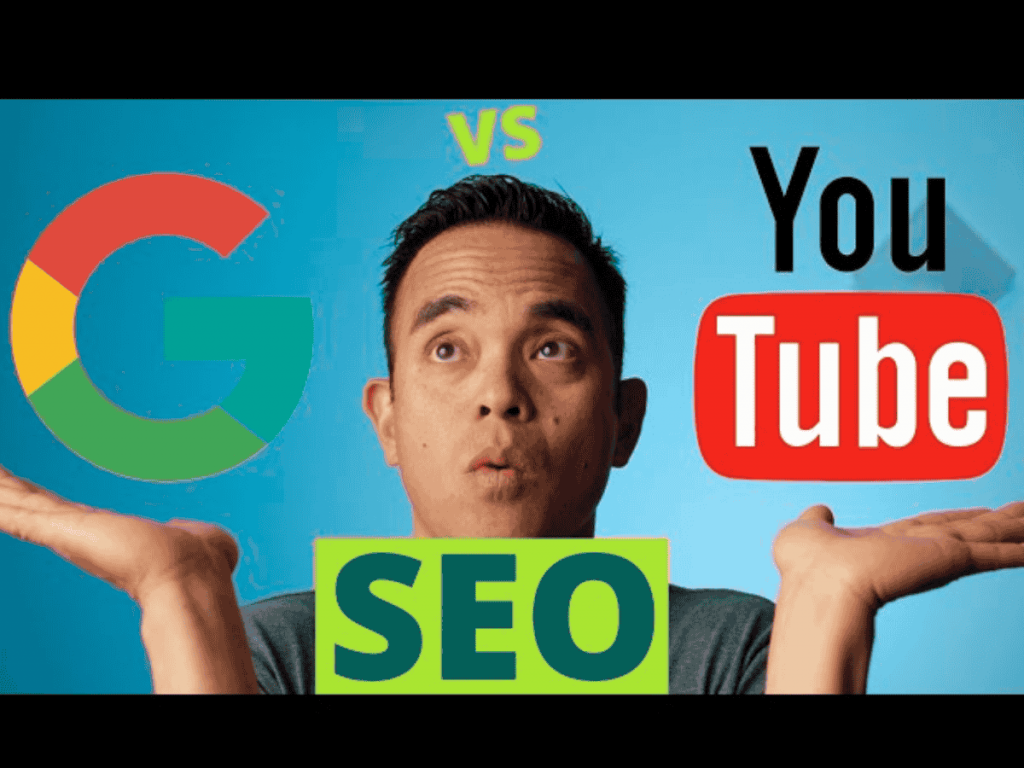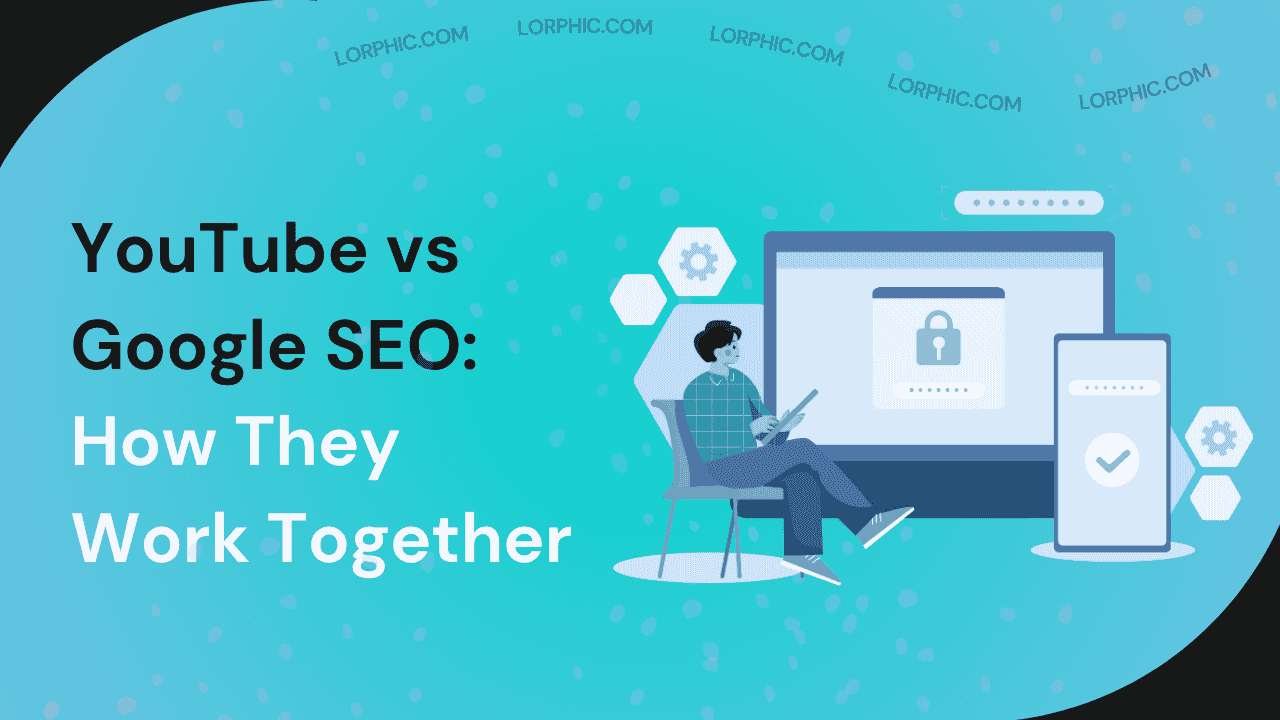In today’s world of the internet, it’s not possible to discuss online exposure without referring to both YouTube and Google SEO. Although the two sites operate differently, they’re highly linked, particularly given that Google owns YouTube.
So, how do they collaborate? In basic terms, Google SEO gets your site listed in search engine results, whereas YouTube SEO gets your videos listed for searching in YouTube’s world, and usually on Google itself as well.
When executed correctly, searching for both can make you show up twice: once in YouTube searches and once in Google search results, which can give your content twice as much visibility and authority.
What is Google SEO?
Google SEO, or Search Engine Optimization, is the process of improving your website so it appears higher in Google search results. It focuses on written content like blogs, articles, and landing pages that people look for online.
The key parts of Google SEO include using the right keywords naturally, writing helpful and original content, getting backlinks from trusted websites, and making sure your site is fast and mobile-friendly.
Technical elements like meta descriptions and site structure also matter. In 2025, Google focuses more on useful and trustworthy content that matches what people really want to find, rather than on keyword stuffing.
How Does Google SEO Work?
Google SEO functions by scanning billions of web pages to determine which ones best satisfy a user’s search intent. When someone searches on Google, the algorithm evaluates several factors, including:
- Relevance: Whether the content provides a clear and direct answer to what the user is searching for.
- Authority: The credibility of the website, often determined by backlinks and mentions from other reputable sites.
- User Experience: How well the website performs, including page speed, mobile responsiveness, and overall usability.
In 2025, advancements like Google’s Search Generative Experience (SGE) have changed how search results appear. This AI-powered system highlights content that offers structured, informative, and accurate answers, making quality and clarity more important than ever.
Websites that provide valuable, easy-to-understand information are more likely to appear in featured snippets and AI summaries. Additionally, combining written content with embedded YouTube videos can further enhance performance. Videos increase engagement, help explain complex topics, and strengthen overall visibility across both Google and YouTube search results.
What is YouTube SEO?
YouTube SEO, or Search Engine Optimization, is the process of improving your videos, playlists, and channels so they rank higher in YouTube’s search results and even appear on Google. It involves more than just uploading content, it’s about making sure YouTube’s algorithm clearly understands your video’s topic, audience, and purpose.
When done effectively, YouTube SEO helps your videos reach the right viewers, gain steady traffic, and build long-term authority for your channel. It focuses on optimizing elements like titles, descriptions, tags, and engagement metrics such as watch time and likes.
In simple terms, YouTube SEO ensures your content stands out in a competitive space by aligning it with what viewers are actually searching for.
How Does Youtube SEO Work?
In 2025, YouTube’s algorithm mainly focuses on how well your videos keep viewers engaged, how relevant your content is, and how long people watch it. Understanding these factors helps you improve your channel’s visibility and reach more viewers.
Here’s a simple breakdown of how YouTube SEO works:
- Keyword Optimization: YouTube uses your video’s title, description, and tags to understand what your content is about. Using the right keywords in these areas helps YouTube match your video with search queries. Learning how YouTube SEO works makes it easier to optimize these details and get your videos noticed.
- Engagement Signals: Likes, comments, shares, and overall watch time tell YouTube that viewers find your content valuable. The more people interact with your video, the more likely it is to appear in search results and recommendations.
- Click-Through Rate (CTR): Your video’s title and thumbnail are what viewers see first. A catchy title and an appealing thumbnail increase clicks and signal to YouTube that your video is worth watching.
- Viewer Retention: The longer viewers stay on your video, the better it performs. YouTube favors content that keeps people watching from start to finish. Focus on keeping your videos interesting and engaging throughout.
- Session Time: If viewers continue watching more videos after yours, YouTube sees that as a positive sign. It means your video contributed to a good viewing experience, which can improve your ranking.
YouTube SEO keeps changing as the platform grows, so it’s important to stay updated. Following a well-structured YouTube SEO checklist can help every video perform better and attract more organic traffic over time.
Youtube and Google SEO: Key Difference

Although both YouTube SEO and Google SEO focus on improving visibility and reaching the right audience, they work in very different ways. The main reason lies in the type of content, ranking signals, and user behavior each platform values.
Here’s a detailed comparison:
| Aspect | Google SEO | YouTube SEO |
| Primary Content Type | Google SEO mainly deals with text-based content like blogs, articles, and web pages. The search engine analyzes written information to determine how useful and relevant it is to a user’s query. | YouTube SEO focuses on video content, which includes visuals, audio, and storytelling. The platform evaluates how engaging and informative a video is based on how users watch and interact with it. |
| Ranking Factors | The major ranking signals for Google SEO include keywords, backlinks, mobile-friendliness, website speed, and user experience. It rewards content that provides accurate, high-quality, and valuable information. | YouTube ranks videos using metrics such as watch time, audience retention, engagement (likes, comments, shares), click-through rate (CTR), and metadata like titles, tags, and descriptions. These help the algorithm understand your video and its relevance. |
| Algorithm Focus | Google’s algorithm focuses heavily on search intent and website authority. It aims to display results that best match what the user is looking for and come from trustworthy sources. | YouTube’s algorithm prioritizes viewer behavior and satisfaction. It promotes videos that keep users watching longer and encourage them to engage or watch more videos afterward. |
| Optimization Tools | Common Google SEO tools include Google Search Console, Ahrefs, Moz, and SEMrush. These tools help track keyword performance, backlinks, and overall website health. | YouTube SEO uses platforms like TubeBuddy, VidIQ, and YouTube Studio Analytics. These tools help creators find the best keywords for videos, track performance, and improve engagement. |
| Goal | The main goal of Google SEO is to increase website traffic, generate leads, and drive conversions through organic search results. It focuses on bringing users to your website. | YouTube SEO aims to increase video views, grow subscribers, and build audience trust by making videos more discoverable within YouTube and on Google’s video search results. |
| User Intent | On Google, users are often searching for answers, guides, or products. They want quick, detailed, and actionable information. | On YouTube, users often look for visual learning, entertainment, or reviews. Videos that educate or engage tend to perform better. |
| Content Longevity | A well-optimized Google page can stay on the first page of results for months or even years if it continues to meet user needs and earns backlinks. | YouTube videos can also gain long-term visibility, but their success depends on consistent engagement and the platform’s evolving recommendation trends. |
Why Optimizing for Both Platforms Matters?
Optimizing your content for both YouTube and Google SEO creates a strong digital presence that increases visibility, builds trust, and drives consistent engagement. When both platforms work together, your content becomes easier to find and more valuable to your audience. A report by Wyzowl found that 91% of marketers say video has helped them increase traffic, while SEO-backed articles continue to drive long-term search visibility, combining both offers the best of both worlds.
Increased Visibility Across Platforms: Videos that are well-optimized for YouTube often appear in Google’s video section, giving your brand more chances to be seen by a wider audience. This cross-platform visibility helps attract viewers from both search engines.
Improved Ranking Opportunities: Embedding YouTube videos within SEO-optimized blogs or web pages can help improve rankings on Google. It also keeps visitors on your page longer, signaling to search engines that your content is engaging and relevant.
Stronger Brand Authority: When your brand consistently appears on both Google and YouTube, it builds credibility and trust. This dual visibility helps establish your business as an expert source of information in your niche.
Traffic Diversification: By targeting both platforms, you attract visitors from multiple sources, organic Google searches and YouTube recommendations. This balanced traffic helps reduce reliance on a single channel and ensures steady growth.
For instance, a digital marketing agency might write a blog about creating a YouTube content strategy and embed a short video tutorial explaining each step. This not only strengthens the blog’s SEO performance but also improves the video’s reach on YouTube.
Final Thoughts: The Power of Integration
Whether you are a creator, marketer, or business owner, understanding how YouTube SEO and Google SEO work together can make a big difference in your online visibility in 2025.
Both platforms continue to evolve, and real success comes from using them side by side. Well-written and optimized content helps people discover you through Google, while engaging and relevant videos keep your audience interested and connected on YouTube.
In simple terms, Google SEO helps you get found, and YouTube SEO helps you stay remembered.
FAQ’s
Is Google SEO the same as YouTube SEO?
Not exactly. Google SEO focuses on ranking websites, while YouTube SEO helps optimize videos within YouTube’s search system. However, both share similar principles like keyword use and content relevance.
How does SEO work on YouTube and Google together?
Optimizing for both ensures your videos appear in YouTube search results and Google’s video carousel, boosting your chances of discovery on two major platforms.
Which is more important, YouTube SEO or Google SEO?
Both are essential. Google SEO builds web visibility, while YouTube SEO drives video engagement. Using them together helps create a balanced digital marketing strategy.
Curated by Lorphic
Digital intelligence. Clarity. Truth.




